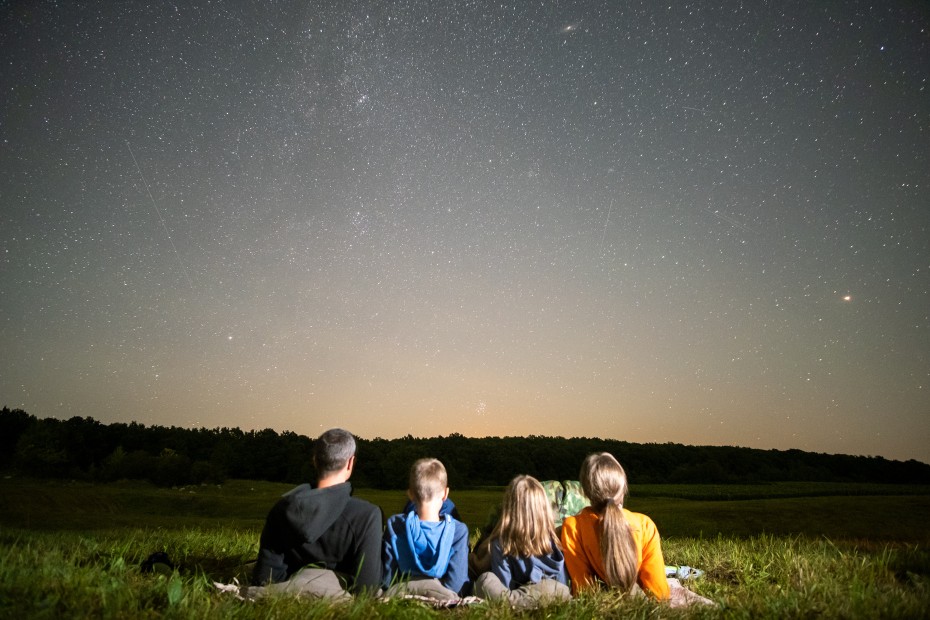
Heavy Rain, Flooding, and Chance of Severe Weather Staring Down the Southern U.S.
January 22, 2024
Posted: October 20, 2021 11:09 am





The Orionid meteor shower is back for another show on Wednesday. Will the weather conditions in your area make it easy for you to catch these beauties streaking across the sky? Here is what you need to know.
The Orionids are one of the most popular meteor showers of the year. The meteors come from the remnants of the famous Halley’s Comet. While this comet will not make its way back to the inner solar system for viewing until 2061, its field of debris will be on display late Wednesday night and into early Thursday morning.
The Orionid meteor shower gets its name from the Orion constellation since these particular meteors come from this area of the night sky. However, it should be noted that stargazers do not need to focus on just this area. The Orionids will be visible all across the night sky and not just near the radiant point located by the Orion constellation.
In order to boost the odds that you catch these meteors, you should locate the radiant point of this shower. The higher that the radiant point is located, the more frequent the meteors will be on display. Because the radiant point of the Orionids will be at its highest point in the sky just before the sun rises, you will see the best chances of catching these meteors if you are willing to be awake during the second part of the night.
The Orionids typically boast approximately 20 meteors per hour during an average year. However, this year’s shower coincides with the full Hunter’s Moon. The light from this full moon will shine all night long, making it more challenging to spot some of these meteors. This moon means that stargazers should temper their expectations heading into the night. The hourly rate of meteors could be cut in about half because of the Hunter’s Moon.
The Hunter’s Moon will rise on Wednesday at about sunset in your local area. The bright moon will be visible in the eastern sky.
The moon gets its name because it occurs during the time of the year when people used to begin hunting and collecting food ahead of the long and cold winter. Other nicknames for this moon include the Migrating Moon, the Falling Leaves Moon, and the Freezing Moon.
So what areas of the country will experience the best chance of seeing the Orionids this year? The best odds will be in Texas and along the Gulf Coast with clear conditions predicted during the peak hours of the Orionids. Some parts of the Desert Southwest, the southern Plains, and a section of the mid-Atlantic will also see a break in the clouds.
A large storm system out west will produce a number of clouds, making it difficult to see the shooting stars throughout the West Coast and into the Rocky Mountains. Cloud cover throughout the Great Lakes will also make it difficult to see any of these meteors.

The American Meteor Society (AMS) recommends that you focus on the darkest areas of the sky in order to increase the chances that you spot the most meteors. This means training your eyes away from the full moon or other city lights. You will also enjoy a better viewing experience if you avoid looking at your cell phone. Finding a place with as little light pollution as possible is always a good rule of thumb to follow when going stargazing.
As any astronomer will tell you, the fall is one of the best times of the year for meteor showers. After October’s Orionid meteor shower wraps up, there will be three additional smaller showers in November. During the first week of the month, the Southern Taurids will reach their peak.
The Southern Taurids are followed by the Northern Taurids shooting across the sky during the second week of November. While both of these showers typically only deliver about five meteors each hour, they are distinguished by their propensity to offer bright meteors that are often easier to spot.
To wrap up the month, the Leonids will peak later in the month. This shower is expected to deliver 10 to 15 meteors each hour.

January 21, 2024

January 19, 2024

January 18, 2024